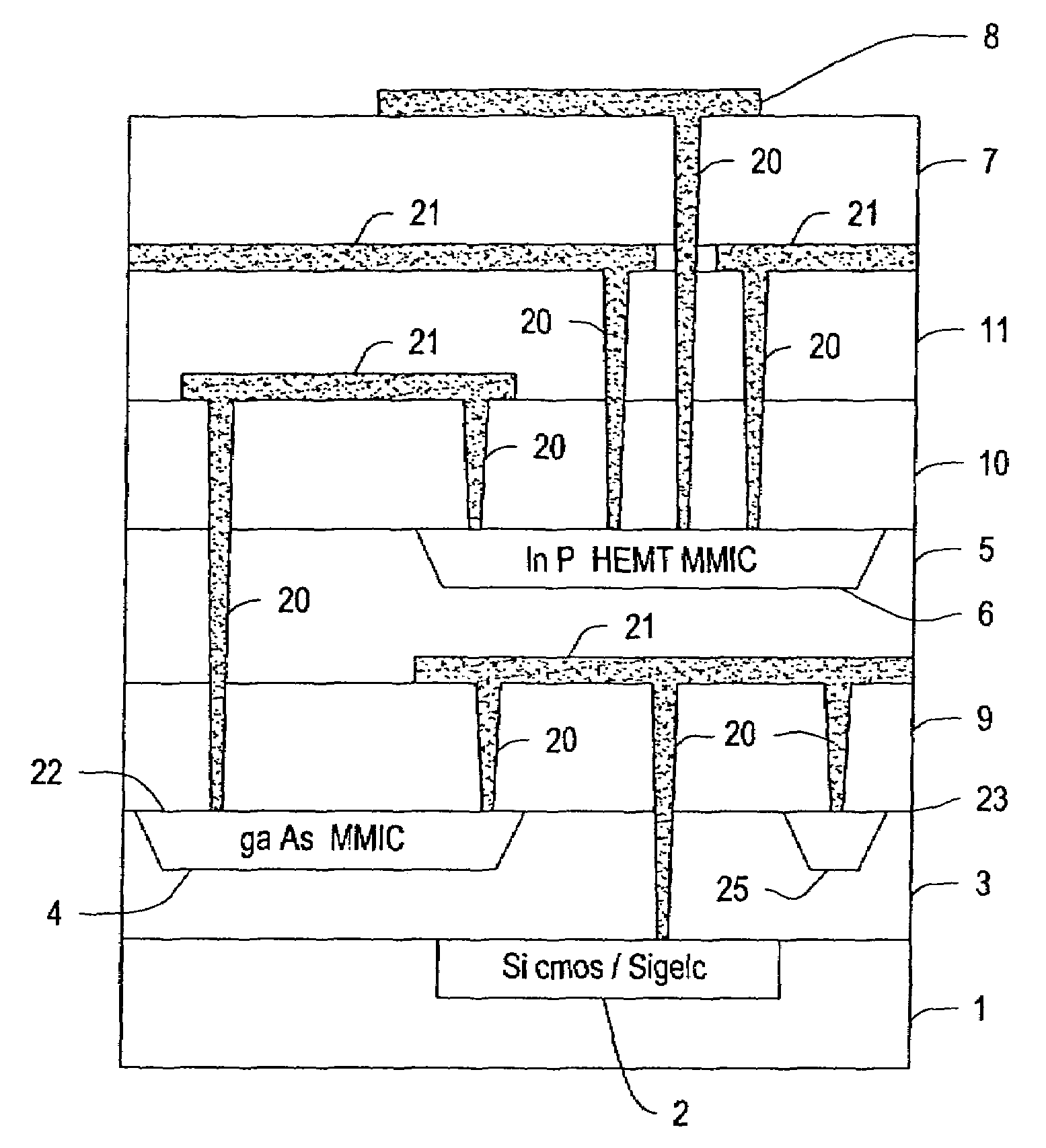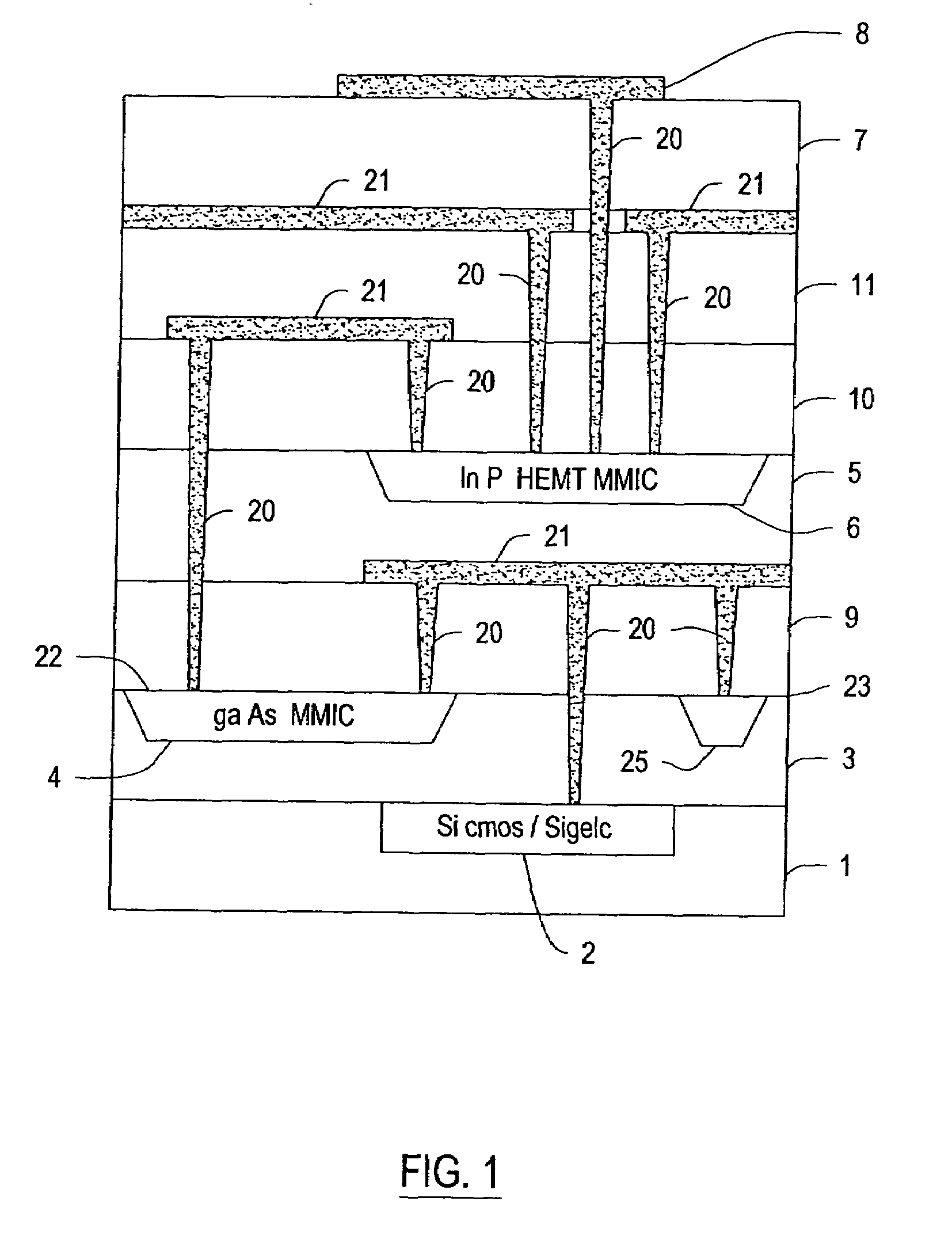Process for assembling three-dimensional systems on a chip and structure thus obtained
a three-dimensional system and chip technology, applied in the field of process for fabricating electronic circuit devices, can solve the problems of costly development of customized processes for every component, limited number of different devices and material systems, and limited application range of both techniques, so as to achieve large gains in size, weight and performan
- Summary
- Abstract
- Description
- Claims
- Application Information
AI Technical Summary
Benefits of technology
Problems solved by technology
Method used
Image
Examples
Embodiment Construction
[0037]Reference now will be made to the drawings, which are used to aid in the description of preferred embodiments of the invention. However, the invention is not limited to the drawings or description presented herein.
[0038]According to the present invention, multiple layers consisting of vertically-integrated electronic components, such as active RF device and sensor transducers (antennas, optical receivers, etc.) are stacked one over the other.
[0039]FIG. 1 shows a schematical cross-sectional view of an exemplary three-dimensional system architecture according to the present invention, referred to as an integrated transmit / receive module for RF applications.
[0040]A substrate 1, for example, a silicon substrate, contains a CMOS microcircuit 2, such as a high-performance Si / SiGe CMOS integrated circuit. The silicon substrate 1 forms the host circuit or base upon which multiple receptacle layers 3, 5 and 7 are registered. Each receptacle layer is capable of supporting components fab...
PUM
 Login to View More
Login to View More Abstract
Description
Claims
Application Information
 Login to View More
Login to View More - R&D
- Intellectual Property
- Life Sciences
- Materials
- Tech Scout
- Unparalleled Data Quality
- Higher Quality Content
- 60% Fewer Hallucinations
Browse by: Latest US Patents, China's latest patents, Technical Efficacy Thesaurus, Application Domain, Technology Topic, Popular Technical Reports.
© 2025 PatSnap. All rights reserved.Legal|Privacy policy|Modern Slavery Act Transparency Statement|Sitemap|About US| Contact US: help@patsnap.com



